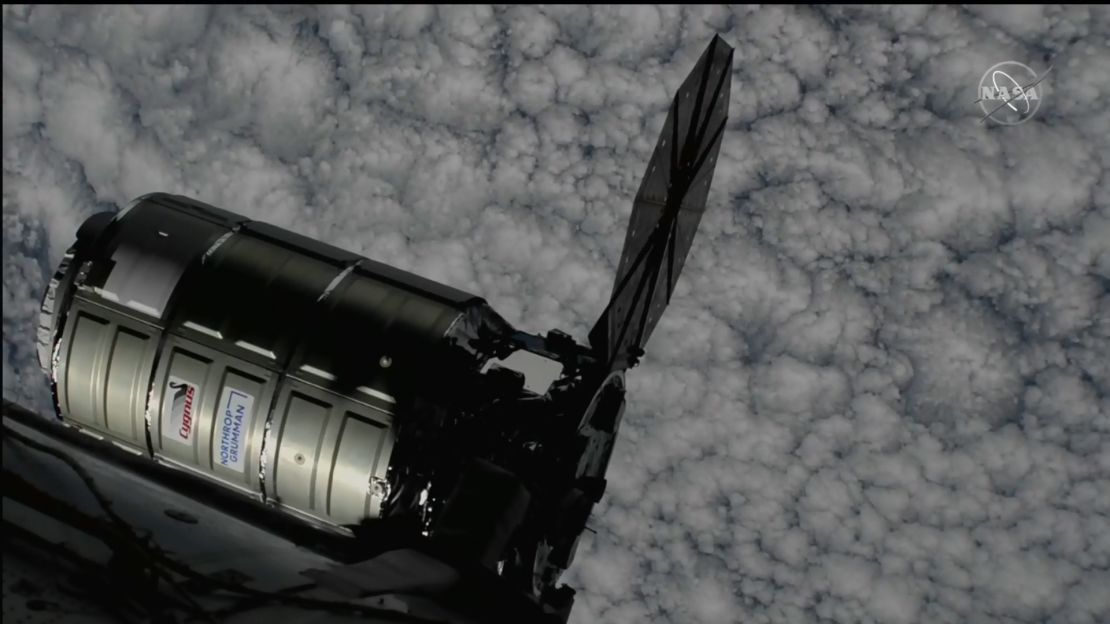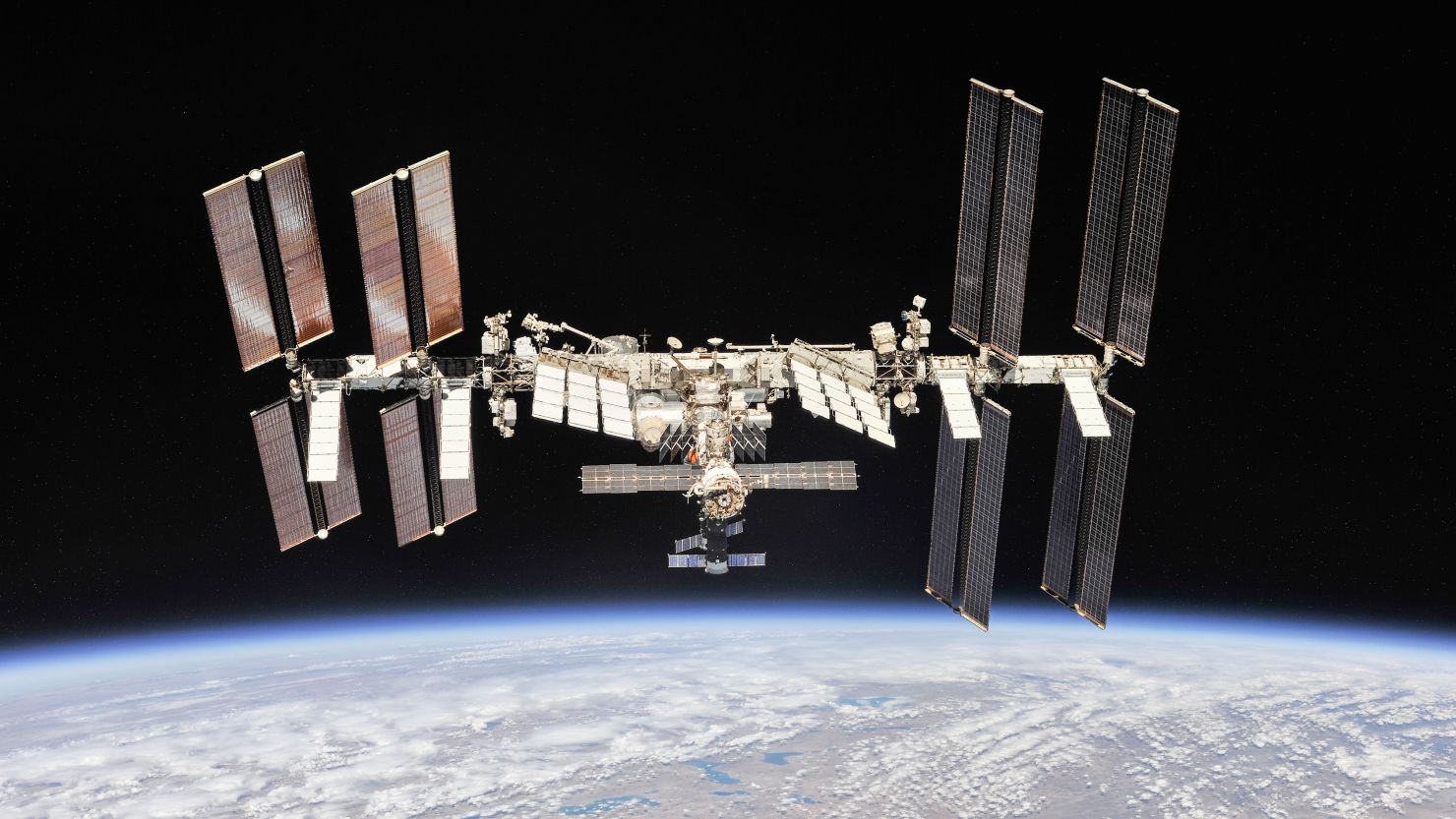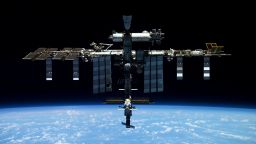Sign up for CNN’s Wonder Theory science newsletter. Explore the universe with news on fascinating discoveries, scientific advancements and more.
A cargo spacecraft successfully docked with the International Space Station Wednesday morning, despite making its two-day trek through space with only one functioning solar panel.
US defense contractor Northrop Grumman’s Cygnus spacecraft, which was carrying 8,200 pounds of science experiments and supplies for the astronauts on board the ISS, lifted off from NASA’s launch site in Wallops Island, Virginia, atop an Antares rocket on Monday.
A few hours after Cygnus reached orbit and separated from the rocket, one of the spacecraft’s two solar arrays failed to deploy, NASA announced.
Teams on the ground initially attempted to troubleshoot the issue, hoping to coax the solar panel open, but they were unsuccessful, according to a NASA statement released Tuesday. NASA and Northrop Grumman, which designed and built the Cygnus capsule, opted to abandon those efforts in order to focus on carrying out a safe rendezvous with the ISS, noting that the spacecraft already had sufficient power to finish its journey. Northrop Grumman did not immediately respond to a request for additional information Tuesday evening.
“The Cygnus team is gathering information on why the second array did not deploy as planned,” NASA’s Tuesday statement noted.
The docking took place at 5.20 a.m. ET Wednesday morning as the ISS flew over the Indian Ocean.
As the Cygnus capsule approached the ISS, NASA astronaut Nicole Mann used the space station’s robotic arm to latch on to the vehicle and drag it toward its docking port.

Orbital ATK, an aerospace and defense company acquired by Northrop Grumman in 2017, was selected in 2014 alongside Elon Musk’s SpaceX to develop vehicles capable of taking cargo to the ISS. The Cygnus spacecraft has been flying routine cargo missions to the ISS for years and has 18 successful missions under its belt.
It has also notched one failure. In 2014, the Antares rocket, which was also developed by Orbital ATK, exploded shortly after taking off, destroying the spacecraft and grounding the Cygnus program for more than a year.
The Cygnus capsule used for this week’s mission was named the S.S. Sally Ride, a nod to the first American woman to fly to space. NASA said the resupply capsule “will remain at the space station until January before it departs for a destructive re-entry into Earth’s atmosphere.”
The cargo aboard this mission includes supplies that will support more than 250 science experiments and other research efforts, according to NASA. It’s also carrying fresh fruit and vegetables for the crew, as well as holiday treats.








